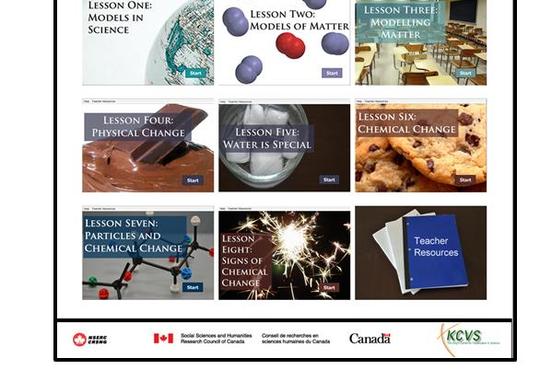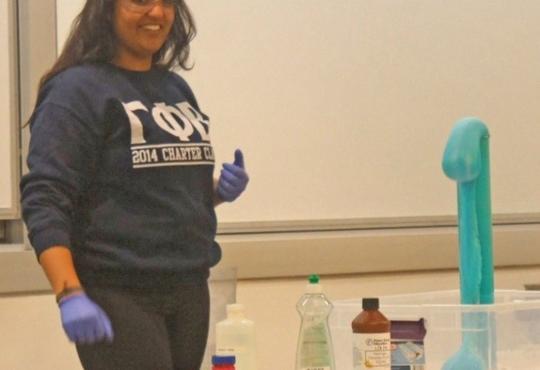As a new teacher I thought that I would never be like my quirky science teacher colleagues, but after nearly 20 years of teaching chemistry, I have developed a weakness for “mole art”. I love the element of fun that mole art brings to my teaching environment. My students get a little glimpse into my soul when I bring in a new handmade mole to decorate my classroom.
It started about seven years ago when I discovered a stuffed mole pattern in ChemTopic Labs Volume 7: Molar Relationships & Stoichiometry by Flinn Scientific. The pattern is very easy and quick to make. I made three immediately — a custom-designed mole for every chemistry teacher at my school. The department chair got a mole in school colors with the letter “P” on the side for Pomfret. Another colleague got a mole made out of her college school colors, adorned with flowers so everyone could tell it was a “she-mole”. I named my first mole Milli and I even gave her a rabbit fur hat, which was made out of fur that fell from our rabbit pelt when I was demonstrating the polarity of water.
I still manage to find reasons to have my mole in class throughout the year. I bring her out on the first day to introduce the mole and then again when my students learn molarity. The image of a one-molar solution will always stay fresh in their minds when then think of Milli sitting in a one-liter beaker. But wait, I can double the concentration by adding one of her mole friends to the beaker. The sight of the two moles crammed into a one-liter beaker always makes me laugh out loud. My students quickly realize that not only do I like to make things by hand, but I also enjoy bad jokes!
My latest mole creation is a wonderful mole doorstop, which was inspired by a great book called Faux Taxidermy Knits by Louise Walker. This fun book is a must-read for every knitter. The mole doorstop was very fun to make; and I knit it up in just one day!
When finished, the mole appears to be emerging from a mound of dirt as if to say hello to everyone. The base is filled with rocks to weigh it down so that it will function as a doorstop. I made the new mole just in time for the start of the mole unit. On the first day of the mole concept, I split my class into small groups to do the POGIL activity called “Relative Mass and the Mole”. (POGIL Activities for High School Chemistry by Laura Trout). During the activity one of my students came up to the front of the room and took the mole back to his table for inspiration. I saw him with his arm around the mole throughout the class, as if to include the mole in the group discussion. When the novelty wears off, I’ll put him to work as a doorstop, but for now he is located on the front table to greet my students when they come to class for more mole calculations.
In addition to the mole doorstop and the fuzzy mole friends, I have made a handsome mole mobile which hangs in the room. I call it the molebile.
Two years ago our Head of School charged us to “make your space your own” at the start of the school year. He said, “Give your classroom some personality and make it a fun learning environment.” I knew exactly what I had to do: make more moles. For this mole art piece, I used the same stuffed mole pattern from Flinn to make a set of moles in bright colors — I have bins of fabric scraps for just this kind of spontaneous project. Some antiquated glassware I found in our stock room served as the perfect vehicle for the bright moles. I always enjoy the moment when my students finally understand the molebile, usually a few days — (or weeks) — after I introduce the concept.
Mole art is just one of the ways that I try to make chemistry a fun and memorable experience for my students. I never under-estimate the value of a good sense of humor in the science classroom.










